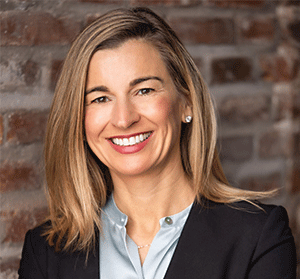As heard on HME News in 10: Annie Erstling on bridging the technology gap

By Theresa Flaherty, Managing Editor
Updated 12:26 PM CST, Tue November 22, 2022
 Annie Erstling, chief strategy officer at Forcura, a health care workflow management company, has worked in roles for payers and technology companies, and worked “loosely” with providers. That background has given her a close view of gaps in communication and data sharing between those parties.
Annie Erstling, chief strategy officer at Forcura, a health care workflow management company, has worked in roles for payers and technology companies, and worked “loosely” with providers. That background has given her a close view of gaps in communication and data sharing between those parties.
“I feel payers don’t have a full understanding of the services and impact that post-acute (providers) can deliver,” she said. “And I think post-acute providers aren’t fully aware of the quality metrics payers have to meet and they are not, therefore, positioning themselves strategically.”
Erstling was a recent guest on the HME News in 10 podcast, where she discusses how technology can help both payers and providers.
Proving value upstream
Because providers are not fully aware of what quality metrics payers need, they are not leveraging technology to provide value back upstream and, therefore, are getting reimbursed at lower rates, says Erstling.
“It’s really limiting their ability to grow and deliver continual improvement in the space,” she said. “In order to improve that and develop metrics that are going to be meaningful, there needs to be a working relationship. Technology is going to have to have a place in providing the data and the information and making it actionable for both the providers and the payers. Instead of waiting for the government to step in, which is what so often happens, the payers and post-acute care providers need to solve this challenge.”
Meaningful metrics
What metrics are meaningful?
“How quickly are you responding to a referral for a new patient – a patient that’s transitioning from a hospital system into a home health care setting,” Erstling said. “How quickly are you able to onboard that patient, what percentage of referrals that you receive are you accepting, what’s the ratio of administrative staff to clinical staff, and what’s the retention rate of your staff?”
It’s also helpful to be able to articulate very clearly if you specialize in a specific condition type and the outcomes you are driving for those patients, says Erstling.
Pandemic effect
The pandemic has highlighted the value of post-acute and home health care, and payers are taking note, says Erstling.
“With the peak of the pandemic, hopefully, behind us, we’ve got some regulations out there that are starting to cut reimbursement rates,” she said. “There’s a risk that could slow things back down again, but I’m really hopeful (about) this continued partnership from payer to post-acute provider and upstream to hospital partners, as well. I think we are headed in the right direction.”
Listen to the HME News in 10 podcast.
Comments